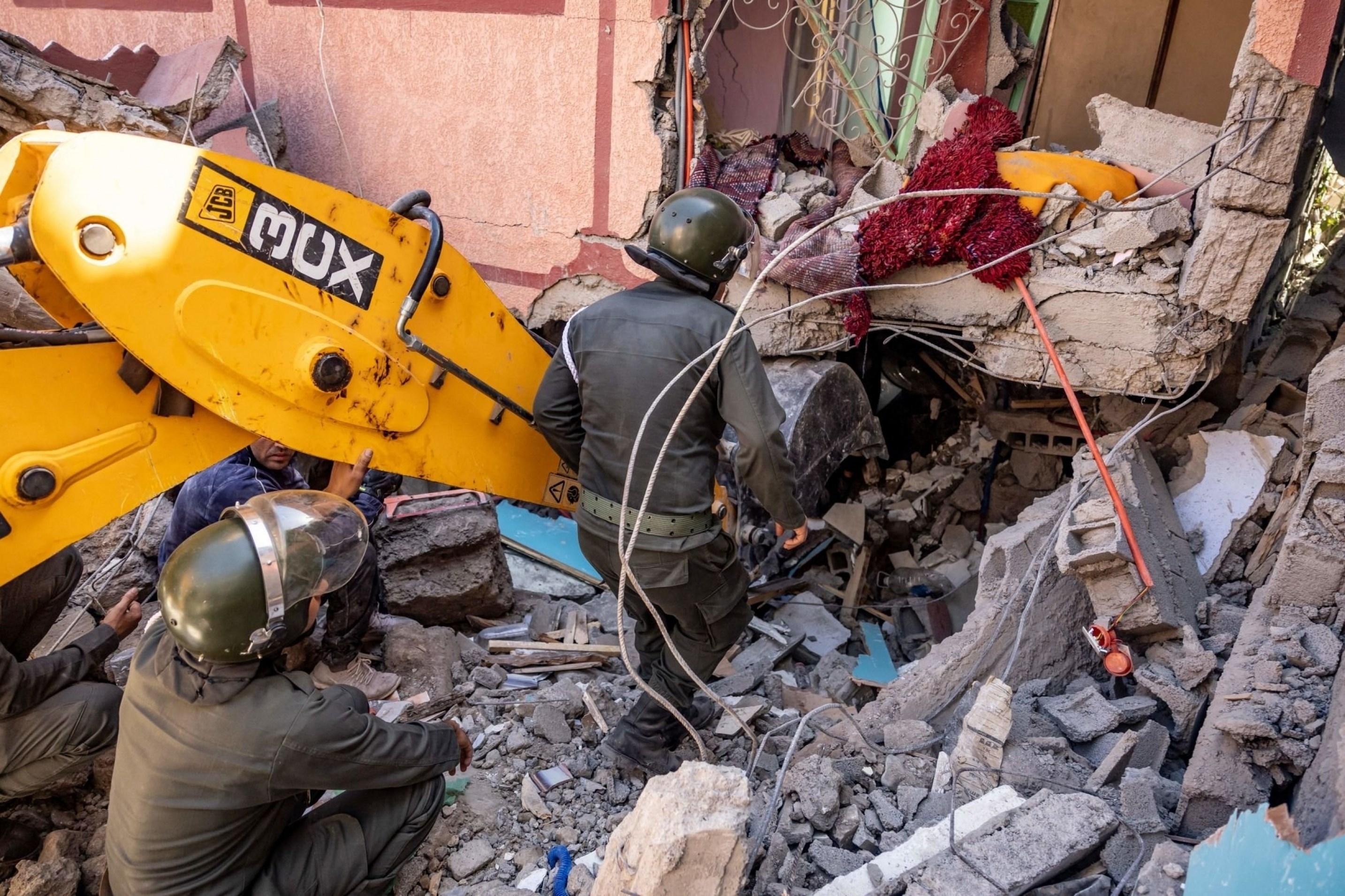A chronicle of earthquakes in Morocco: From year 818 to 2023
Learn more about Morocco's seismic history, from the Middle Ages to the devastating 2004 Al Hoceima earthquake and today's.
-

Rescuers use a small excavator to search for survivors under the rubble of a collapsed house in Moulay Brahim, al-Haouz province, on September 9, 2023, (AFP)
Morocco has historically been a hotspot for earthquakes, with some resulting in thousands of casualties, as well as significant material losses. Some earthquakes that hit the North African country did go unnoticed, however, the most recent one which hit Morocco overnight has resulted in hundreds of victims so far.
Morocco is located in a seismically active region at one of the largest intracontinental belts in the world, as it is situated on part of the African Plate and the Atlas Mountain Range.
Here are some of the most infamous earthquakes that struck Morocco over the centuries:
Historic events
According to the Moroccan French-language newspaper La Vie éco, an earthquake shook the coasts of the Strait of Gibraltar on May 28, 818, before two violent earthquakes struck Morocco on December 1 and 30, 1079, resulting in the deaths of hundreds under the rubble and causing significant destruction.
Around six hundred years later, a massive earthquake laid waste to various cities in the northern regions of the country on May 11, 1624. On August 5, 1660, Melilla experienced a powerful earthquake, resulting in large casualties and significant material losses.
In 1719, a seismic event along the Moroccan coast also led to widespread destruction in several coastal cities. Agadir was also struck by a violent earthquake in 1731.
At the end of the 18th century, Melilla had to deal with another serious earthquake, suffering heavy material damages and fatalities.
Read more: Morocco's deadliest earthquake in decades claims more than 1,000 lives
20th century onward
In January 1909, earthquakes destroyed several neighborhoods in the suburbs of Tetouan, resulting in over 100 deaths and injuries.
The most devastating recorded earthquake was the one that struck the city of Agadir on February 29, 1960.
The earthquake hit the southern coastal city of Agadir claiming the lives of approximately one-third of the city's population, displacing tens of thousands and causing substantial material damage. The disaster remains to this day one of the world's most destructive earthquakes recorded in human history.
The earthquake reduced the city to rubble, resulting in approximately 15,000 victims and nearly 25,000 injuries, displacing 35,000 people.
Nine years following the catastrophic Agadir earthquake, Morocco found itself confronting yet another powerful seismic event. This time, the earthquake's epicenter was located in Lisbon, Portugal, which somewhat mitigated its impact on Moroccan soil. Nevertheless, it instilled widespread panic and exacted a toll of ten lives, while leaving 200 individuals injured.
More recently, in 2004, the northwestern region of Al Hoceima experienced a devastating earthquake at around 2:27 am on February 24. This seismic event registered a magnitude of 5.2 on the Richter scale. Tragically, it led to the loss of 862 lives, left 629 people injured, and forced a staggering 51,000 individuals to flee their homes.
Meanwhile, today's earthquake that rocked the outskirts of Marrakech overnight resulted in the death of 1037 people and the injury of more than 1204, including 721 in critical condition.
Read more: Broad Arab, international solidarity with Morocco after earthquake

 3 Min Read
3 Min Read








